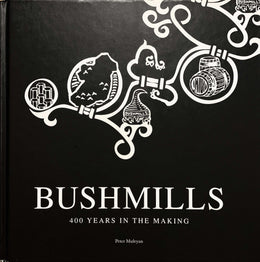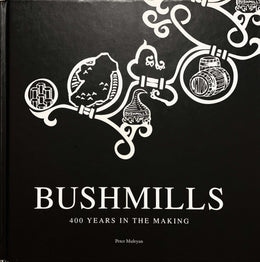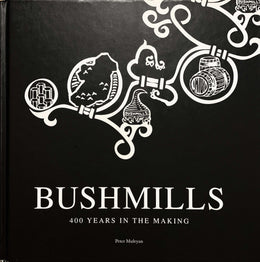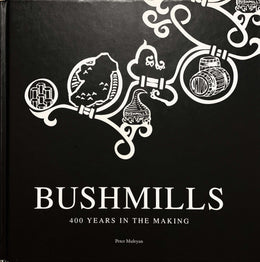Tha Macallan - The Malt: The DNA of Macallan; "The Definitive Guide To Buying Vintage Macallan"
As you are reading this there will be 80-odd distilleries across Scotland engaged in making whisky. All of them will be milling, mashing, fermenting, distilling twice (sometimes three times) and filling into casks; the same process. Why then do they all taste so different?

We used to believe it was the water, now we're told that's not the case. We were led to believe it was the distillery's surroundings that gave the magic edge, but however romantic this may be and no matter how powerful the visions of Highlands and Islands can be when we lose ourselves in a malt's aromas, the evidence shows us that "terroir" doesn't have a huge bearing on the flavour of a malt whisky.
So we're left with a paradox. Malts are essentially the same, yet they are all different. Maybe it's best to see them like people. After all. we're all essentially the same creature, yet are all individuals with our own DNA. My task here is to become part of a malt genome project, explore The Macallan's "DNA", the quirks, the differences, the idiosyncracies, the building blocks in the process which all play a part in creating the spirit's flavour.

It all starts with the malted barley. These days, Macallan is one of only two distilleries to still insist on using Golden Promise barley. At one point this variety was the industry standard, but as newer higher-yielding varieties appeared so it was left on the side like an old make of car, great at one point in time but now miles behind the modern high performance vehicles.

Distillers are always looking for the maximum yield possible; economically it makes sense to make as much alcohol as you can from each ton of barley. Accountants like it. By today's standards Golden Promise is pretty mean and is expensive yet Macallan insists on having a percentage in its malt mix.
It's not because the distillery can throw money away. It's to do with flavour. "In my short time at Macallan I've seen different percentages of Golden Promise used," says Macallan Distillery manager Sandy Lawtie, "and there's a very clear effect on the spirit quality. The more you use the heavier, more robust and cereal-like the spirit is. It's important that we don't use too big a percentage of it, but that we continue to use a certain amount." It's wrong to think of Macallan's quirks as being part of some hidebound tradition. The whisky industry is always looking at ways to improve efficiency without losing any character Macallan's no exception.
"We will continue to evaluate new varieties which will give us both the yield and the quality we require," says Sandy.
Much the same has happened with yeast. Though the Macallan may have stopped using brewers yeast it still insists on using more than one type of distillers yeast in its recipe. Why? Once again, for flavour.
"The more complex the mix, the more complex the fermentation, the more complex the flavours produced. If you don't create flavour here you cannot hope to recover the flavours during distillation."
-David Robertson, Master Distiller, Macallan Distillery
That means keeping a close eye not just on how long the fermentation is allowed to continue (between 50 and 70 hours incidentally) but how strong the wash is at the end of it. Macallan's wash is a lower strength than most in the industry in order, David explains, to get more esters in the wash.
Everything is connected in whiskymaking, the process a continual one which flows from one part of the distillery to the next. That flow takes us to the stillhouse, the blazing heart of the process itself. Here are tiny stills, no more than 12 feet high, compact flavour engines designed and run in order to give a heavy, sweet, oily new make. Their size and plain shape means there's little chance for the spirit vapour to rise up the neck, only to condense and fall back into the boiling low wines (a process known as reflux). The less reflux, the richer the spirit. It's another link in the DNA model.

Macallan’s quaint small stills. (Image Source: The Macallan)
Yet there's more. It isn't just the shape and size of the still but how slow they are run (all these are run at a trickle), and how much of the heart of the spirit run the stillman collects.
It's at this point that you begin to feel that the company accountants must hate this plant. Not only do they buy pricey low-yielding barley but when it comes to distilling it they hardly collect any of the spirit! Only 17% of the charge is collected as new make. Why? Yes, it's flavour again. "The small cut combined with the shape, size and speed of distillation gives the new make a concentration as the robust solventy alcohols come off first." says David. "We seem to get all the early stuff with piles of rich robustness aided lay small reflux and the small stills giving it guts."
The Golden Promise plays its part as well, adding an oiliness and richness to the texture, while that low strength wash helps to produce certain flavours. Distilling is a chain reaction. Everything impacts on everything else. "We are looking for a synergistic effect where the end result is greater than the sum of the parts", says David.

That robust new make is perfectly suited to life in a European oak cask, the final element in the Macallan DNA. Note that it's European oak cask and not a sherry cask. In the past we'd have gone on about how oloroso made all the difference but life moves on. It's the species of oak which adds to the flavours that have already been built in. The element in the DNA that adds rich colour, sweet aromatic notes of clove, resin, and fruit comes from the fact that Macallan insists on only using sherry casks made predominantly from air-dried European, rather than American, oak. Ultimately the unique character of The Macallan is shaped by the choice of wood species and its condition, together with the particular quality of the new make spirit.
By this time the accountant must be bald as this type of wood is considerably more expensive than the ex-Bourbon barrels made from American oak that 90% of the industry uses. Air-dried wood is pricier than kiln-dried but the latter gives acrid, astringent notes. Butts are bigger and more difficult to source than barrels but put new make in a powerfully flavoured European oak barrel and you'd soon have a woody whisky. The bigger the cask the better the balance between wood and spirit meaning a tighter specifications on what type of cask will give the Macallan its unique character.
This is The Macallan's DNA. It's not the only way to make whisky; there is no one 'right' way in this business. This is what works for this distillery. Like you or me it is an individual. Let's celebrate that.
Written by David Broom
The text is an excerpt from "The Definitive Guide to Buying Vintage Macallan" (pp. 9 - 12), First Edition, published 2003 by Macallan Distillery Ltd.







